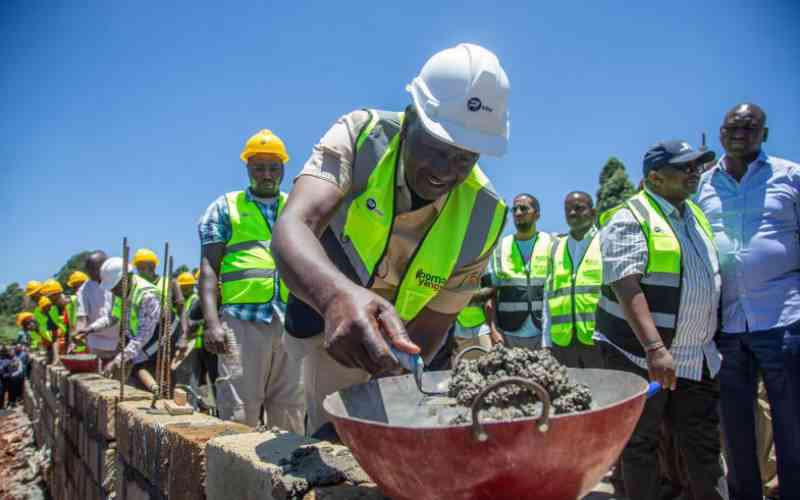
By Mark Kapchanga
Wildlife experts are calling on the East African Community (EAC) partner states to move with speed in coming up with a masterplan for managing cross-border natural resources in the region.
They say four years after the EAC trans-boundary Ecosystems Management Bill was launched, nothing seems to have moved forward as Kenya, Uganda, Rwanda, Burundi and Tanzania have failed to adhere to it.
Programme Manager for Kilimanjaro Landscape in African Wildlife Foundation (AWF) Noah Sitati says there has been little development in acting on the issues raised in the document due to lack of clarity on who is supposed to implement it.
“No one seems to know, yet it is an issue we have raised in different forums, most recently in Tanzania,” Dr Sitati told The Standard.
At a time when poaching is a major problem in the five-member trading bloc, Dr Sitati says the Judiciary must also come up with punitive measures to curb the nuisance.
“Until hard-hitting strategies are devised, poaching will remain a key concern to our economy,” he said.
The treaty for the establishment of the EAC in Article 112 enjoined the partner states to co-operate in all issues related to environment and natural resources management.
The document’s primary goal is to provide a legal framework to effectively streamline the management of trans-boundary ecosystems.
Wildlife experts say it is the failure to actualise this critical treaty that has left poaching is thriving at the Kenya-Tanzania border, particularly at Rombo in the Kilimanjaro region.
The illicit trade, Dr Sitati says, has been exacerbated by the fact that the area does not have a network of game scouts or security agents.
“AWF has now established a base. We have also put in place a committee to look into the issue which has seen the Amboseli region lose between eight and 11 elephants in a year,” he said.
Game scouts
The figure, Dr Sitati argues, is quite high for the ecosystem as there is zero poaching in other areas because of the presence of game scouts.
Stay informed. Subscribe to our newsletter
The committee’s report is expected to be tabled in June in Namanga for further deliberations and action by conservation partners.
In a recent joint study by the Kenya Wildlife Service and Tanzania Wildlife Research Institute supported by the African Wildlife Foundation and Tanzania National Parks, it was proposed that the Amboseli-West Kilimanjaro and Magadi-Natron cross-border landscape be considered as a unit of wildlife population and distribution monitoring.
The report further suggested that due to the migratory nature of species such as elephants, there was need for harmonised wildlife management policies between Kenya and Tanzania.
Critics say it is Tanzania’s lukewarm battle against poaching that has made it difficult to wipe out the criminal activity.
Unlike Kenya, Tanzania until recently had not agreed to burn its stockpile of ivory, claiming that the proceeds from the same could support conservation efforts.
Tanzania had asked the Convention on International Trade in Endangered Species (CITES), an international agreement between governments aimed at ensuring that global trade in specimens of wild animals and plants does not threaten their survival, for an exception to the ivory ban for such a sale, with proceeds used only for conservation efforts.
However, they withdrew their request in early 2013.
Currently, Tanzania has a combined stockpile of 118,000 tonnes of ivory, made up of those from the death of animals due to old age and those confiscated from poachers.
 The Standard Group Plc is a
multi-media organization with investments in media platforms spanning newspaper
print operations, television, radio broadcasting, digital and online services. The
Standard Group is recognized as a leading multi-media house in Kenya with a key
influence in matters of national and international interest.
The Standard Group Plc is a
multi-media organization with investments in media platforms spanning newspaper
print operations, television, radio broadcasting, digital and online services. The
Standard Group is recognized as a leading multi-media house in Kenya with a key
influence in matters of national and international interest.
 The Standard Group Plc is a
multi-media organization with investments in media platforms spanning newspaper
print operations, television, radio broadcasting, digital and online services. The
Standard Group is recognized as a leading multi-media house in Kenya with a key
influence in matters of national and international interest.
The Standard Group Plc is a
multi-media organization with investments in media platforms spanning newspaper
print operations, television, radio broadcasting, digital and online services. The
Standard Group is recognized as a leading multi-media house in Kenya with a key
influence in matters of national and international interest.









